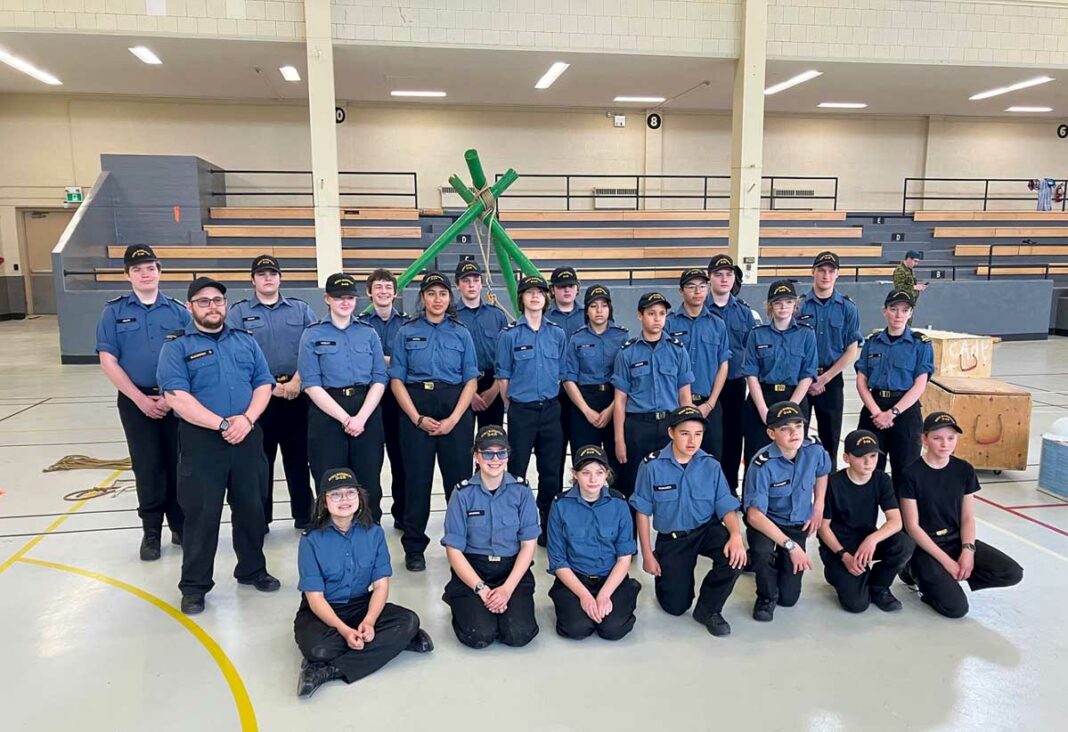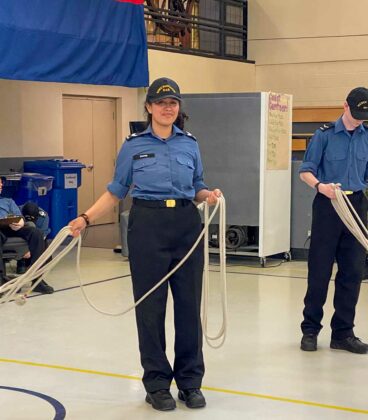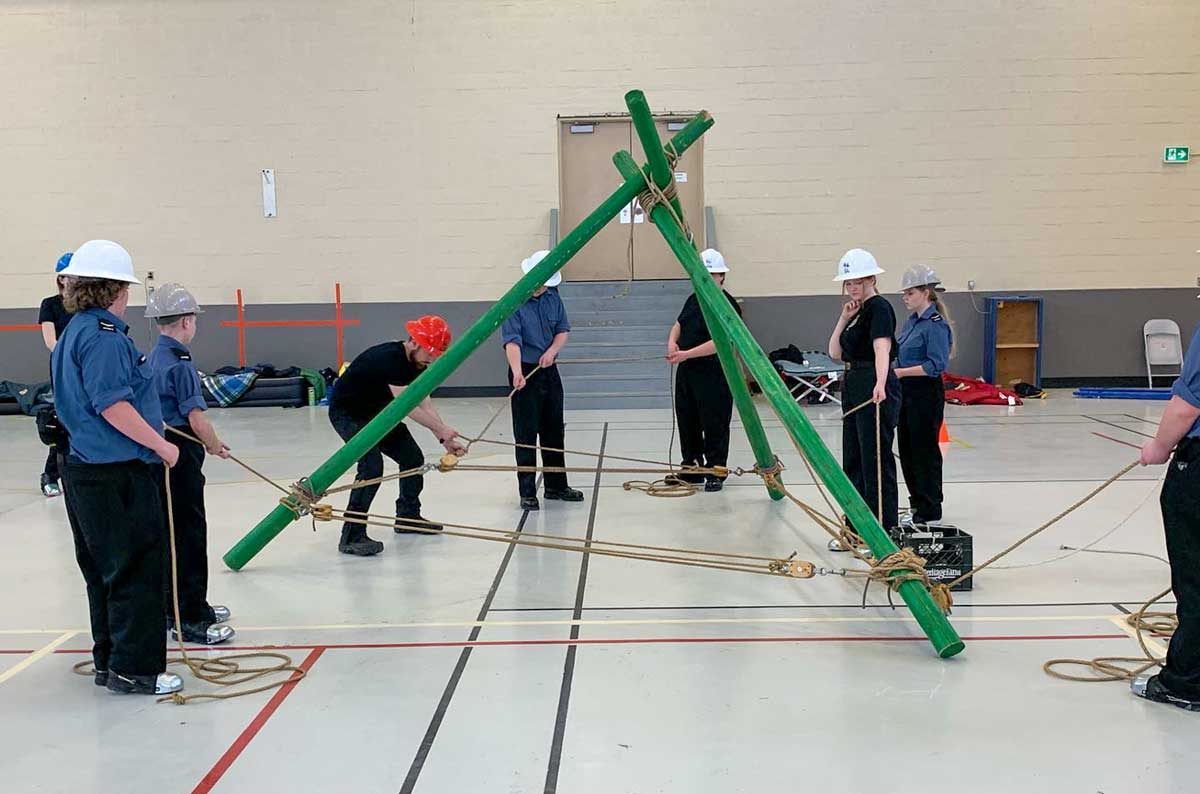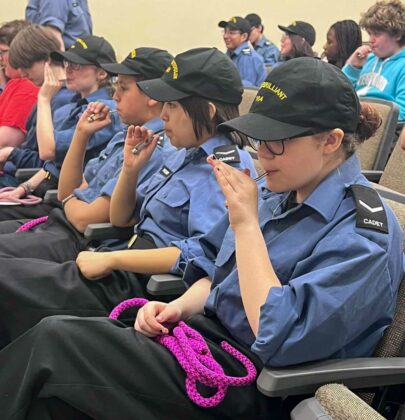MANITOULIN—Members of the Royal Canadian Sea Cadet Corps (RCSCC) 348 Manitoulin joined other cadet corps in Sault Ste. Marie the last weekend in April for seamanship training.
Sylvain Boucher, Lt. Commanding Officer RCSCC 348 Manitoulin explained, “on the weekend of April 28-29, sea cadets from across Northern Ontario gathered in Sault Ste. Marie for the Seamanship Inter-Divisional Competition (SIDC). There were approximately 80 cadets in attendance, 21 of whom make up (RCSCC) Manitoulin. Other cadet corps included RCSCC Tiger from Timmins, RCSCC Brilliant from North Bay, RCSCC Admiral Mountbatten from Sudbury, RCSCC Captain Kidd from Elliot Lake, and the host for the weekend, RCSCC Royal Sovereign in the Soo.”
“The cadets in attendance ranged in age from 12-18,” said Lt. Boucher. “They participated in many seamanship training activities over the weekend, which is ‘the art or skill of handling, working, and navigating a ship,’ according to Merriam-Webster. The cadets were divided into teams comprised of two or three members from each corps.”
“On Saturday, the cadets participate in eight learning stations,” said Lt. Boucher. They included basic ropework of seven different knots with varying applications on a marine vessel, and how to rig tackles (pulley systems) using both “luff” and “two-fold purchase” set-ups; Heaving line, the technique of throwing a long line with a target stationed 35 feet away. This is used to pass lines from your vessel to the short, another vessel, or personnel in the water; boatman’s call, identifying pipes (tunes) and executing notes on a small, handheld whistle, traditionally used to deliver commands over the sound of the water, crew and other noises onboard a ship; monkey’s fist key chain. At this fun station, the cadets made personal key chains, creating a ‘monkey’s fist,’ a woven ball traditionally placed at the end of a heaving line to add weight; gyn-a gyn setup is a tripod of three large spars (poles) that are lashed together and raised using pulleys. This tripod is used for raising and lowering supplies between upper and lower decks on a ship; Scop 2, Radio communications, including procedures, checks, safety, urgency, and distress calls; Naval communications, using the phonetic alphabet, used for radio communication, and international signal flags, used traditionally to communicate between vessels or between a vessel and harbour; naval navigation, a game set up to teach on-the-water right of way, buoys, and emergency procedures.
Throughout each of the stations, cadets earned points with mini competitions, completing the lessons, and for enthusiasm and encouraging other team members, said Lt. Boucher.
“Saturday night, the cadets participated in Swim to Survive, a program offered by the local community centre through the Lifesaving Society,” said Lt. Boucher. “This program emphasizes the basic skills needed to survive falling into the water. The cadets also enjoyed a free swim in the pool.”
On Sunday, the cadet teams designed and built model boats using household items such as milk jugs, duct tape, and paper, continued Lt. Boucher. “The materials to build the boats were ‘purchased’ by the teams using the points they had scored during Saturday’s stations. The boats were put to the test in a tub of water and judged on buoyancy, stability in strong seas and creativity.”
Lt. Boucher added, “throughout the weekend the cadets enjoyed opportunities for good food and created friendships that will last a lifetime. The seamanship skills they learned will come in handy as they spend the summer boating with their families here on the Island, participating in summer training and camp programs across the province, or perhaps in the future through other sea cadet opportunities or nautical careers.”








